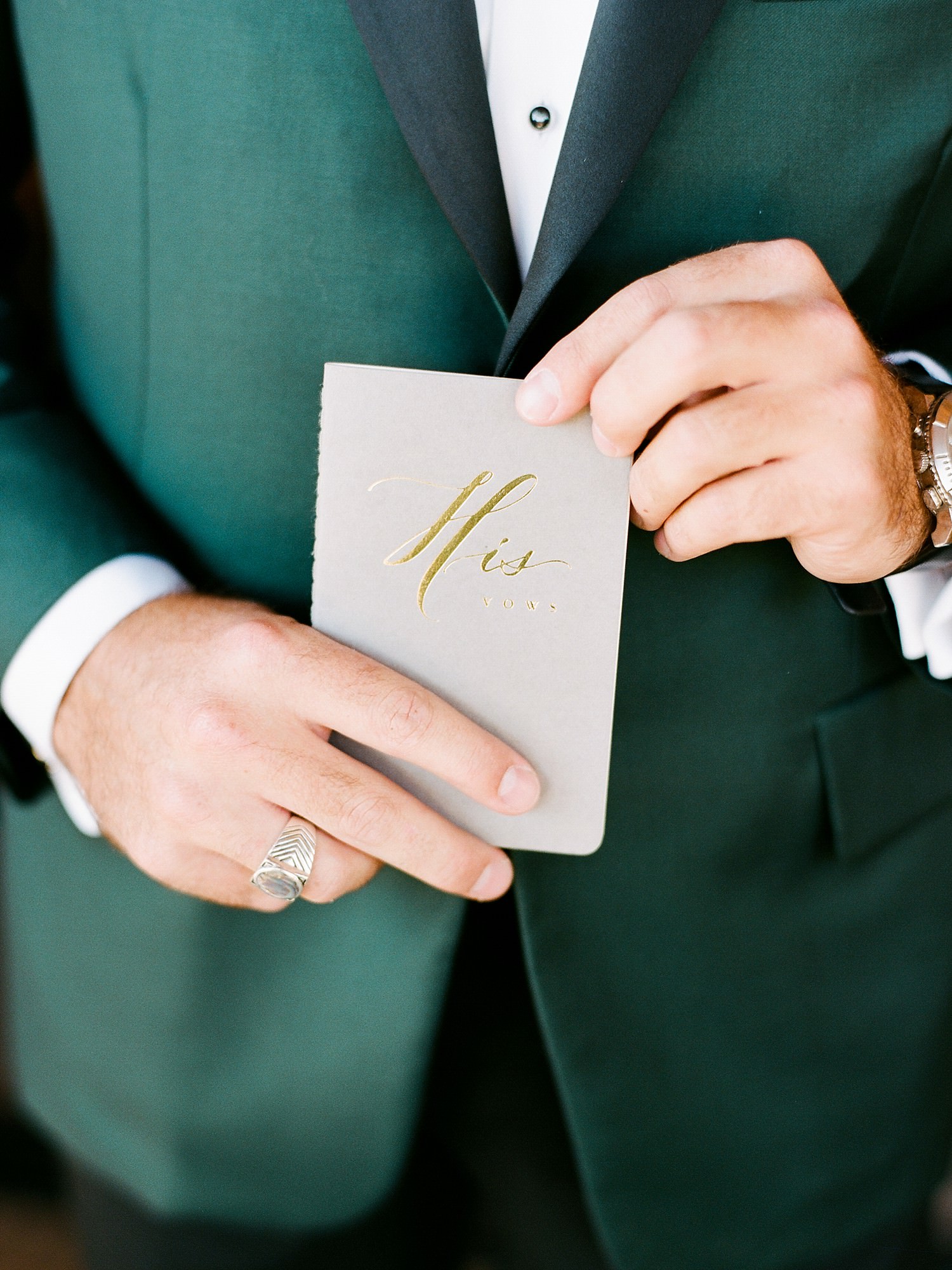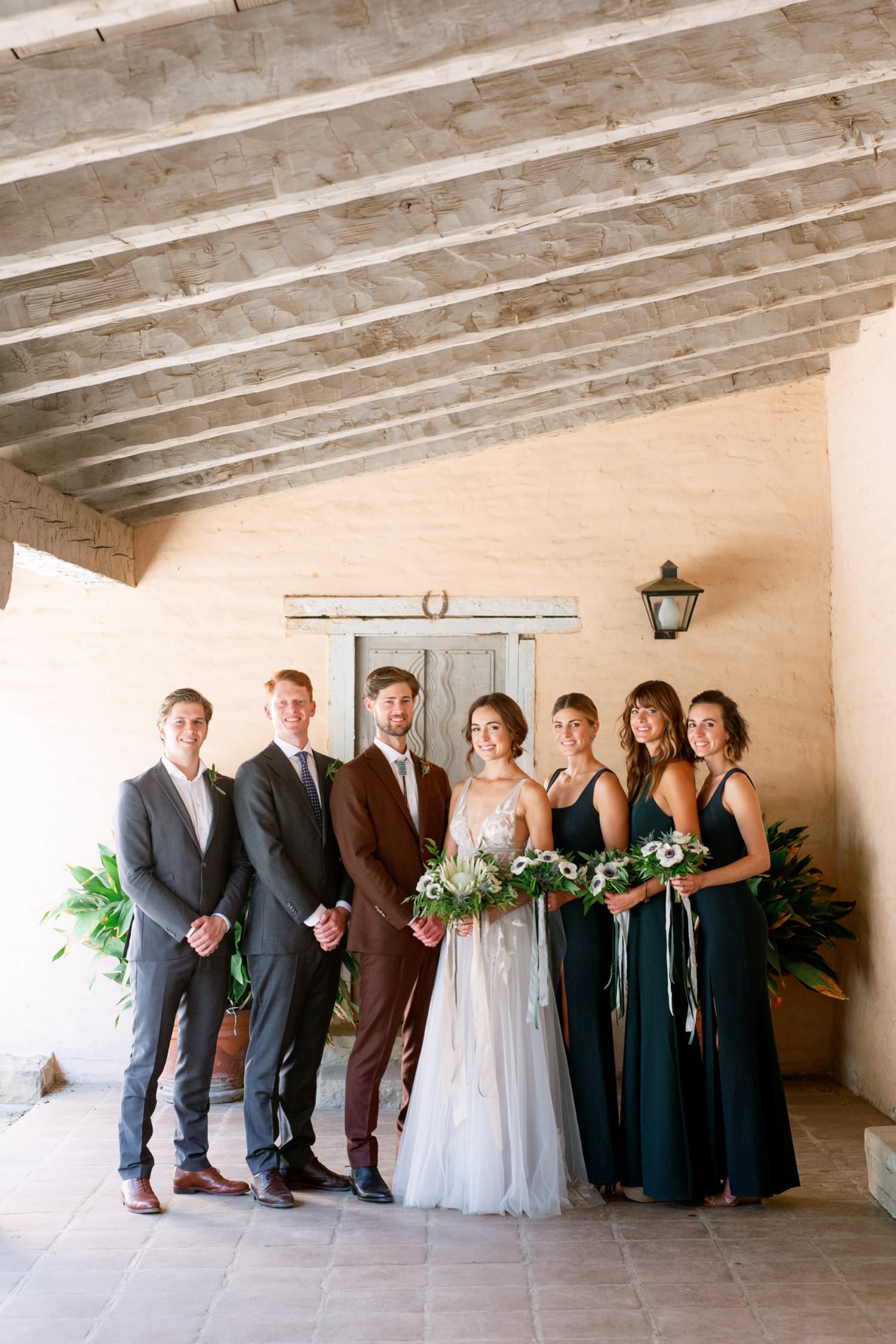Wedding photographers know to take photos of your wedding party, flowers, and first kiss as married spouses.
What we’re more interested in are the details, however small they might seem, that can make a huge difference in helping to create a collection of stunning wedding images. And some of the details that can be so useful have been left off of those lists of “must-have” wedding photos on pretty much every wedding blog out there. They often go completely overlooked but can make a significant impact on some sweet moments of your wedding day. So, here are some tips for better wedding photos.

Vow books by Seniman Calligraphy for Kiersten + Ruairi’s wedding
Write your vows
…on something prettier than hotel stationery or typed on your cell phone. I love the idea of these vow notebooks to hold your vows, or a plain little Moleskin notebook works just as well! Giving one of these to your fiancé is good insurance against the last-minute possibility that he’ll jot vows on a piece of scrap paper or the back of a receipt, neither of which look very romantic in photos.
Pay attention to the light when choosing a venue.
When you’re looking for a ceremony space, visit during the same time of day the ceremony will take place (think about time changes and seasons, too). For a mid-summer wedding in Southern California, an invitation time between 5:00 and 6:30 p.m. with your guests facing west is a photographer’s dream for a ceremony outdoors. The backlighting casts a beautiful glow on your ceremony, and generally means you won’t be squinting in your photos.
Now, if your chosen venue doesn’t have the perfect setup, that doesn’t mean you should abandon it as a contender for your big day. It’s just one of many things to consider, and it’s important to know that the location of your ceremony will affect your photos. A good wedding photographer can work with most lighting situations, but it helps if you know what to expect from the finished product if your altar is in direct sunlight, spotty light under leafy trees, or half in shadow. Plus, you won’t get soft, glowy ceremony images if you have a 1:00 p.m. invitation time. Those types of images are not a priority for everyone, but if they are, plan accordingly.
Have an engagement session.
Having a pre-wedding shoot with your photographer is a great way to feel more comfortable in front of the camera. Most couples we work with preface our sessions with the disclaimer that they’re a little awkward in front of the camera, which is a totally normal reaction to having professional photos taken. Wedding photographers are used to this. But a great way for you to get used to being the center of attention (and yes, this is what your wedding day is about, if you tend to be shy) is to schedule a session with the photographer you’ve hired for your wedding.
You’ll get to know your photographer a little better so he/she will feel more like a friend when showing up on your wedding day, plus you get a trial run before the “main event” to reflect on what you might like or dislike about posing, facial expressions, or other little details. Engagement photos give you a chance to talk with your photographer about any body insecurities you’d prefer to minimize, or angles or poses that make you look your best. And—bonus!—an engagement session means you’ll have photos of yourself to use for your wedding website, guestbook, and décor (plus some professional images of yourself in clothes other than your wedding day attire).

Eliot + Alex‘s intimate wedding party
Keep your wedding party small(ish).
Fewer wedding party attendants means fewer people to wrangle when it’s time for wedding party portraits, which can be a time-saver and less stress for everyone. It also means there are fewer restrictions on where your photographer can shoot these portraits. If you each have eight attendants (plus four flower girls, two ring bearers, and three ushers), it can be a challenge to find a spot with a pleasant background, beautiful light, AND enough room to line everyone up.
Under five on each side (so ten or less, not including the two of you) seems to be the sweet spot; having two, three, or four makes magic for photos. Don’t get us wrong — if you have a large wedding party, we’ll make it work and you’ll get awesome photos! But in our experience, your options for location and creativity grow (and your stress level decreases) if you have a smaller group of people.
Ask your officiant to step to the side for your first kiss.
Chances are, you chose an officiant or celebrant you connect with and are excited to have with you while you exchange vows. Still, we’ve found the best “first kiss as husband and wife” photos are ones without your officiant in them. The partial view of his or her head behind the two of you as you share a kiss can be distracting and take a photo from frame-worthy to just “so-so.” It’s a small step to the side that can make all the difference.
Have an “unplugged” ceremony.
Ask your guests to refrain from holding their own cameras or cell phones in the air during your wedding, and you’ll reduce the potential for distracting elements in ceremony photos, as well as ensure your hired photographer has a clear view and optimal conditions at all times. You hired your wedding photographer to get the best photos of the day, right? So it’s a good idea to ask your friends and family to stay seated and get out from behind their devices. Your photographer can do his/her job effectively, and your guests can truly be present and enjoy the moment instead of worrying about which shot of you they should post to social media.
Implementing an unplugged ceremony can be as easy as a note included with invitations or on your website, a polite sign as guests enter the ceremony, or a brief announcement from your officiant before the ceremony begins.
